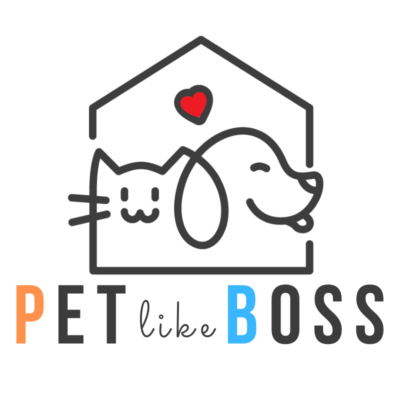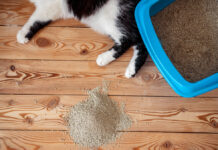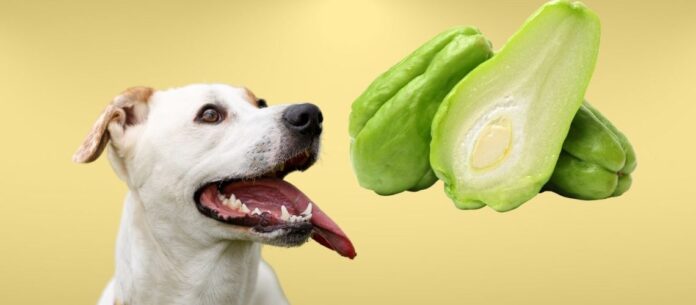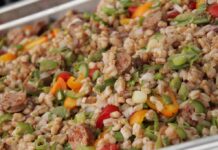Hey there, fellow dog parents! Ever found yourself staring at that weird-looking green veggie in your kitchen and wondering if your furry friend can have a bite? Well, you’re not alone! Today, we’re gonna dive deep into everything you need to know about feeding chayote squash to your four-legged bestie.
The Quick Answer (For Those in a Hurry!)
Yes, dogs can safely eat chayote squash! It’s actually pretty good for them when prepared correctly. But hold up – there’s more you should know before tossing this veggie to your pup!
What’s So Special About Chayote Squash?
Chayote (also called mirliton or vegetable pear) is like this super-cool veggie that’s packed with awesome nutrients. Here’s what makes it special:
- Low in calories
- High in fiber
- Loaded with vitamins C and B6
- Rich in antioxidants
- Contains potassium and folate
- Has anti-inflammatory properties
Health Benefits for Your Doggo
When you share some chayote with your pup they’re getting these amazing benefits
- Better Digestion: The fiber content helps keep their tummy happy
- Immune System Boost: Thanks to vitamin C
- Hydration Help: High water content (great for hot days!)
- Weight Management: Low-cal treat option
- Heart Health: Potassium supports cardiovascular function
How to Safely Prepare Chayote for Your Dog
Listen up! The way you prep this veggie matters A LOT. Here’s your step-by-step guide:
- Wash thoroughly (nobody wants dirty veggies!)
- Remove the seed (it could be a choking hazard)
- Peel the skin (especially if it’s tough)
- Cook it plain – no salt, spices, or oils
- Cut into small, manageable pieces
Cooking Methods That Work Best:
- Steaming (my fave!)
- Boiling
- Baking (without oils or seasonings)
Portion Size Matters!
Even good things need moderation fam! Here’s a rough guide
- Small dogs: 1-2 small pieces
- Medium dogs: 2-3 medium pieces
- Large dogs: 3-4 larger pieces
Remember treats should only make up about 10% of your dog’s daily food intake!
Warning Signs to Watch For
While chayote is generally safe, some doggos might have sensitive tummies. Keep an eye out for:
- Diarrhea
- Vomiting
- Excessive gas
- Loss of appetite
- Tummy rumbling
If you notice any of these, maybe chayote isn’t their thing – and that’s totally okay!
When to Skip the Chayote
Don’t feed chayote to your dog if:- They’re allergic to squash- Have a history of digestive issues- Are on certain medications (check with your vet!)- The chayote is moldy or spoiled- It’s been seasoned or cooked with other ingredients
Fun Ways to Serve Chayote to Your Dog
Wanna make it more exciting? Try these ideas:
- Frozen chunks (perfect for summer!)
- Mixed with regular dog food
- Training treats (when cut super small)
- Stuffed in a Kong toy
Other Safe Squash Options
If your pup’s not feeling the chayote vibe, try these alternatives:
- Butternut squash
- Acorn squash
- Pumpkin (a doggy favorite!)
- Zucchini
- Yellow squash
The Bottom Line
Chayote squash can be an awesome, healthy addition to your dog’s diet when served properly. Just remember:- Start small- Watch for reactions- Keep it plain and simple- Always consult your vet if unsure
FAQ Section
Q: Can dogs eat raw chayote?A: While not toxic, cooked is better for digestion.
Q: How often can I feed chayote to my dog?A: 1-2 times a week is plenty!
Q: What if my dog ate seasoned chayote?A: Monitor them for upset tummy and call your vet if concerned.
Q: Can puppies eat chayote?A: Yes, but wait until they’re on solid food and start with tiny amounts.
Final Thoughts
Adding chayote to your dog’s treat rotation can be a great way to boost their nutrition and add variety to their diet. Just remember to introduce it slowly and keep portions reasonable. Every dog is different, so what works for one might not work for another.
And hey, if your pup turns their nose up at chayote? No biggie! There are plenty of other healthy treats out there to try. The most important thing is keeping our furry friends happy and healthy!
Remember to always supervise your dog when trying new foods and keep your vet’s number handy – just in case! Happy treating!












